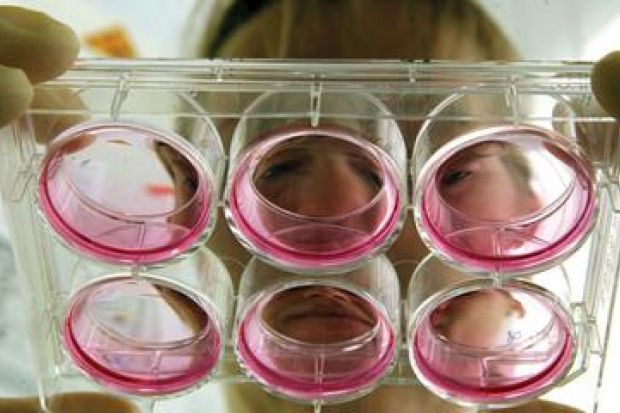Scientific academies have warned that advances in stem cell research could lead European courts to put the legal brakes on patenting ways to use them, dooming the continent to fall behind the United States and China in commercialising biomedical breakthroughs.
To the relief of many scientists, in 2014 the European Union’s highest court lifted a ban on patenting uses of stem cells because, unlike a fertilised human egg, they can start but not complete the process of developing into a human being.
But recent scientific advances mean that the prospect of stem cells being able to fully develop into humans is moving closer, All European Academies (Allea) has warned, meaning that the courts could once again hamper patenting in a crucial area of biological innovation.
Joseph Straus, an intellectual property expert and chair of Allea’s working group on IP rights, said that a number of scientific papers released recently had brought the issue back on to the agenda. “Now they are talking about developing human embryos from the Petri dish,” he said.
Unlike in the US and China, this could mean that European courts restrict the patenting of stem cell uses despite allowing them to be used in research and otherwise be commercially exploited, he argued, a position that was “absolutely inconsistent” and “not very encouraging” for European science.
A better patenting system “would foster innovation and reward inventors instead of providing conditions for free riding by competitors”, according to Patentability of Inventions Involving Human “Embryonic” Pluripotent Stem Cells in Europe, a report from Allea released last month, of which Professor Straus was the lead author.
The question of whether the European Court of Justice would block future patenting of stem cell uses hinges on whether the cells could ever have the “inherent capacity of developing into a human being”, a definition set out by the court in 2014.
Martin Pera, a professor at the Jackson Laboratory, a biomedical research network largely based in the US, and one of the scientists whose stem cell work has been cited by Professor Straus, said that there was “certainly good evidence that human pluripotent stem cells [those capable of developing into many other cell types] can replicate some aspects of early embryonic development in a culture dish”.
“However, there is no evidence that human pluripotent stem cells, or even mouse pluripotent cells, can give rise to a new individual on their own,” he cautioned.
Julian Hitchcock, a life sciences specialist at the law firm Marriott Harrison, said that he thought it was “reasonable” for Allea to raise concerns over future legal blocks on patenting, but was “relatively relaxed” about the danger, for several reasons.
For a start, research in this area, at least in the UK, was largely funded by public bodies not interested in patents, he said. “Businesses do not want to throw money at embryonic stem cell research because you won't get a return,” he argued.
He also thought that it was “extremely unlikely” that scientists could “just leave them [the stem cells] and they turn into a human”, making it unlikely that they would soon fit the EU court’s definition of having “inherent capacity”. It would also be national courts, not the EU, that would rule on this question in the future, he said.
But, he added, “the nature of science is that nothing is certain” and was always “contingent on the next experiment.”
Register to continue
Why register?
- Registration is free and only takes a moment
- Once registered, you can read 3 articles a month
- Sign up for our newsletter
Subscribe
Or subscribe for unlimited access to:
- Unlimited access to news, views, insights & reviews
- Digital editions
- Digital access to THE’s university and college rankings analysis
Already registered or a current subscriber? Login





